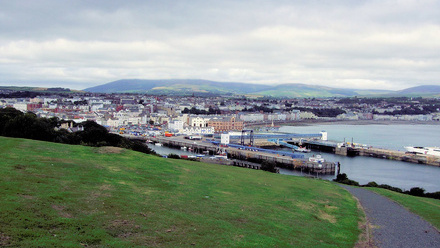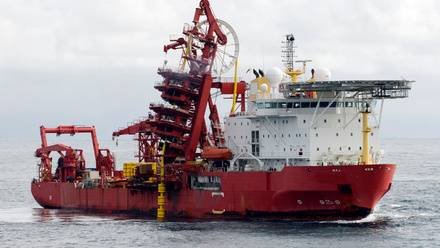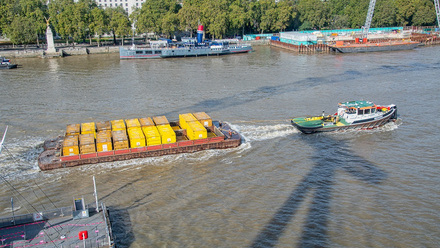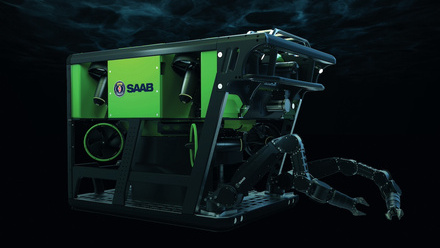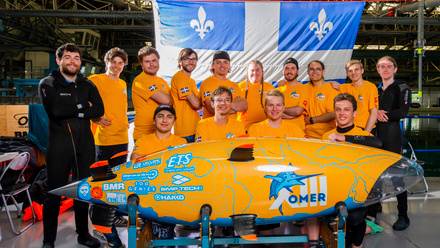Exciting future ahead for underwater robotics
Enabling undersea functions that were previously impossible and delivering environmental benefits in the process, the sector is evolving rapidly.
Oceanbotics Marketing Administrator Mira Nagle considers remotely operated vehicles (ROVs) to be “revolutionising” underwater operations through making them safer, more efficient and more effective.
“We’re opening the door to new possibilities in underwater missions, including mine neutralisation and acoustic tracking. With deployment in under three minutes, professionals can respond faster to underwater recoveries and rescues,” says Nagle. “Key features that set our drones apart include easy setup, intuitive closed-source software and full customisation for each end user.”
A further key driver within the industry is to actively scale-down infrastructure, emphasises Framework Robotics Sales Manager Christopher Riess.
“This can most likely be observed in the emerging of underwater drones capable of carrying out inspection tasks that would formerly have required an inspection-size ROV,” he says.
“With the ROV BUDDY, [it is] a product with work-class system capabilities, yet at only a fraction of the weight, cost and necessary infrastructure – from mobilisation through vessel to logistics.
“Furthermore, with the modular concept, Framework Robotics offers a holistic approach to underwater robotics. What this means is that, based on the same modules, a towfish, an ROV or any other configuration of an underwater robot can be delivered that is the perfect fit for the client’s specific mission.”
Kraken Robotics Executive Vice President and Chief Technology OfficerDave Shea says developments such as the miniature interferometric synthetic aperture sonar (MINSAS) are providing greater accessibility to high-resolution seabed intelligence via smaller systems.
“Kraken MINSAS was one of the first synthetic aperture sonars small and light enough to fit on a small autonomous underwater vehicle,” states Shea.
Another example of robotics expanding the range of underwater functions is Kraken’s Sub-Bottom Imager, which Shea explains is one of the only platforms commercially available that can carry out a depth of burial survey on windfarm cables while energised: “This means that windfarms can continue to produce green energy while our system checks that the cables are safely buried instead of needing to shut down the windfarm during inspection.
“We also have the only pressure-tolerant batteries in the marine robotics industry that don’t require a pressure housing or oil compensator. This saves space, which can be filled with more batteries, ultimately increasing the endurance of autonomous robots.”
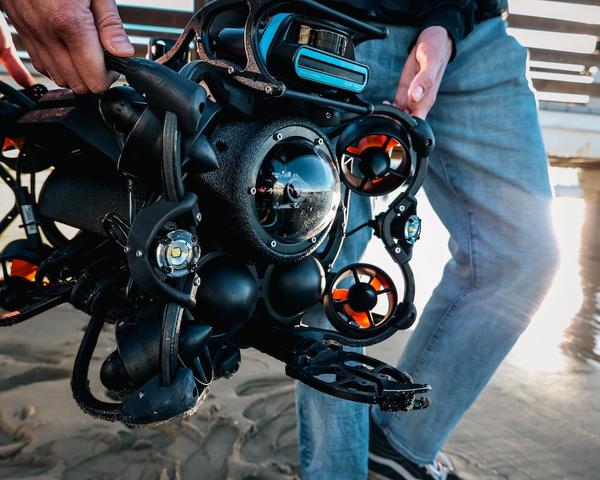
Multitude of environmental benefits
Shea says such advances in robotics are contributing to an increased understanding of the geology of the environment but without the need to take potentially disruptive physical samples.
“This decreases the impact on the ocean floor and marine life while providing critical insights. Data collected by our systems can help in conservation efforts as well as help minimise impact on the environment when installing subsea infrastructure like offshore windfarms.
“Typically, large vessels or platforms are needed to utilise synthetic aperture sonar. But our MINSAS is compact enough to go on a smaller, towed system or an autonomous underwater vehicle. This can minimise the size of the boat needed to get the same (or better) imagery, which ultimately benefits the environment due to decreased fuel usage.”
Professional underwater drones or ROVs are now “critical tools” in the non-disruptive ocean health studies and research of marine science professionals, emphasises Nagle.
“The ability to safely explore deep underwater environments allows scientists to gather samples and observations without risking divers or disturbing ecosystems.
“For example, scientists from the National Oceanic and Atmospheric Administration (NOAA) use Oceanbotics’ ROVs to monitor coral reef habitats in the Gulf of Mexico annually. These ROVs map coordinates, conduct sonar-based observations and capture real-time photos and videos, allowing scientists to compare data year-over-year.”
Riess adds that the use of underwater robotics in general are contributing to a greater understanding of the challenges and processes of the underwater world, and therefore the subsequent development of measures to counteract where necessary.
“Additionally, underwater robots will play a significant role in cleaning up oceans from unexploded ordnances (UXOs), helping in long-term environmental monitoring and – with the ever-increasing quality of sensors – helping build digital twins to become able to simulate the environmental effects of measures taken before putting them into action.”

Future developments
Alongside the ongoing drive to scale down infrastructure, Riess predicts the sector will continue to seek automation and autonomous systems as a means of navigating global staff shortages, as the industry continues a strong growth trajectory.
“Oil and gas will keep up operations for quite a while, offshore wind (including floating wind) is just at the starting point, and many other fields are also growing (UXO clearance, aquaculture, ocean research).
“Framework Robotics will play a crucial role in this development by continuing to increase automation all the way to enabling fully autonomous missions in various underwater areas.”
Similarly, Shea says Kraken’s focus is on continuing to make its synthetic aperture sonar systems smaller, lighter and less power consuming, “while improving our already industry-leading two-centimetre by two-centimetre resolution”.
“Furthermore, we are working on new types of sensors with increased range and unique capabilities in multispectral acoustics, allowing underwater robots to perceive their environments in completely new ways. Kraken has always been at the forefront of innovation in the subsea intelligence space – we spend a lot of time listening to our customers and our industry partners to predict where the sector is headed.”
He also expects significant new developments involving AI and autonomy to leverage the “well-known innovations of other sectors” and enable marine robots to process data more efficiently.
“Capabilities like automatic target recognition and change detection will allow these robots to make decisions on their own, below the surface and without human intervention. As the number of marine robots grows, we expect to see an increase in maturity and reliability, supporting even larger and longer endurance vehicles at the scale of uncrewed submarines, deployed for months at a time.”
Nagle concludes that professional underwater drones will become essential tools for the future as the ocean plays “an increasingly pivotal role in the global ecosystem”.
“Future developments will focus on extending battery life, increasing depth ratings and achieving full autonomy. These advancements will further simplify operations and enhance the user experience.
“The ROV market will continue to grow, [and we are] looking toward the future and how we can increase safety while simultaneously increasing the efficiency and effectiveness of underwater operations.”
Read the first part of our look at underwater robots.
Join IMarEST’s Operational Oceanography Special Interest Group and get systematic and sustained observations, predictions and analyses for many ocean user applications.
Main image: Kraken Robotics’ KATFISH model; credit: Kraken Robotics
Inline image 1: Oceanbotics’ SRV-8; credit: Oceanbotics
Inline image 2: Framework Robotics Sales Manager Christopher Riess; credit: Framework Robotics
Tell us what you think about this article by joining the discussion on IMarEST Connect.

